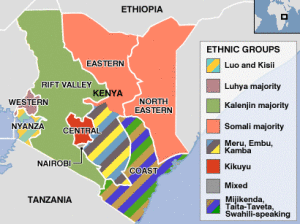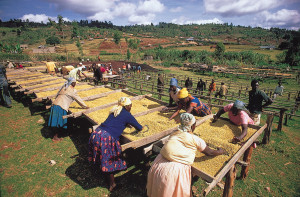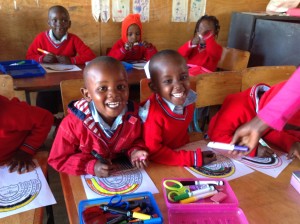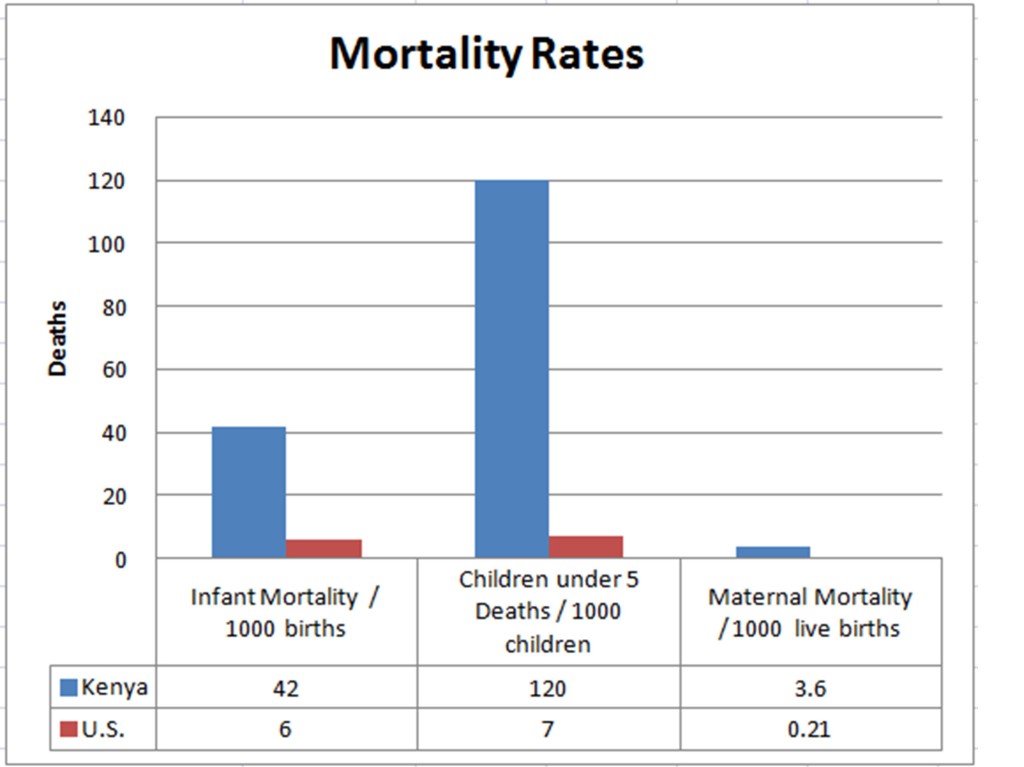About Kenya
- Q?Where is Kenya
-
A.
 Location: Kenya lies across the equator on the East coast of Africa, bordering Somalia, Ethiopia and Sudan to the North, Uganda to the West, Tanzania to the South and the Indian Ocean to the East
Location: Kenya lies across the equator on the East coast of Africa, bordering Somalia, Ethiopia and Sudan to the North, Uganda to the West, Tanzania to the South and the Indian Ocean to the EastArea: Covers an area of 225,000 sq miles (582,646 sq km), approximately twice the size of Nevada
Climate: Pleasant and favorable with plenty of sunshine all year round, rainfall is sometimes heavy around April to May while some areas go without much rain around July/August
Major Towns: Nairobi (capital city)–3.4 million, Mombasa–0.96 million, Kisumu-0.9 million, Nakuru-0.3 million, Eldoret-0.2 million (2009)
- Q?Who lives in Kenya
-
A.
 Population: Estimated at 43 million (2012), 70% live in rural area.
Population: Estimated at 43 million (2012), 70% live in rural area.Language: English (official), Kiswahili (national) and over 40 ethnic languages.
Religion: 45% Protestant, 33% Roman Catholic, 10% Islam, 10% Indigenous Religions, 2% Other, including Hinduism, Jewish
Tribes: Kikuyu, Luo, Luhya, Kalenjin, Kamba, Kisii, Meru, Maasai, and other African and non-African (Asian, European, and Arab) groups
Independence Day: December 12, 1963 (Jamhuri Day) – Independence from British colonial rule
- Q?What are the Economic Drivers
-
A.
 Industry: Small-scale consumer goods (plastic, furniture), agricultural products processing, oil refining, cement
Industry: Small-scale consumer goods (plastic, furniture), agricultural products processing, oil refining, cementAgriculture: Tea, coffee, corn, wheat, dairy products, sugar cane, pineapples
Exports: Tea, horticultural products, coffee, petroleum products, fish
Currency: Kenyan shilling
Per capita income: $1,600 (2009 est), 40% of Kenyans live below the poverty line (less than one US dollar per day)
Unemployment rate: 40%
- Q?Education
-
A.
 Universal Primary Education: Introduced in 2003, added an extra 1.5 million pupils into the country’s primary schools, creating a lack of facilities and teachers
Universal Primary Education: Introduced in 2003, added an extra 1.5 million pupils into the country’s primary schools, creating a lack of facilities and teachersSecondary education: Of the approximately 600,000 pupils who take the national grade eight exams, less than half get into secondary schools due to a facilities shortage; less than 60,000 go on to attend universities or colleges
- Q?What are the Mortality Rates
-
A.
 Infant mortality rate: 43.41/1000 (2012 est)
Infant mortality rate: 43.41/1000 (2012 est)Under-5 mortality rate: 128/1,000 (2008 est)
Maternal mortality rate: 360/100,000 live births (2010 est)
Life expectancy: 63 (2013), up from 57 in 2010
- Q?Orphans and Child Labor
-
A.
Orphans: More than 2.6 million, 1.5 million are orphaned due to AIDS, 12-15% of homes in Kenya are headed by an orphan sibling
Child labor: About 40% of children aged 6-16 are part of the labor force
- Q?HIV / AIDS
-
A.
Prevalence: 6.2%, reduced dramatically from the 1990s, partially due to an increase in education and awareness, but also from high death rates
Sources: Kenyan Embassy, National Geographic, Go Africa, InfoPlease, Compassion, CIA
